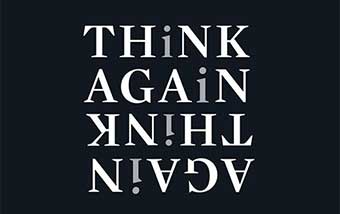Thinker Speaker
“All humans of normal intelligence can learn any language, provided they start at a young age. After the age of five or six, a child can almost never become perfectly fluent in a language, and the ability to learn it can completely disappear soon after that. After puberty, it is almost impossible to perfect the pronunciation of a second language.” Gene, Peoples, and Languages, Luigi Luca Cavalli-Sforza.
Do we speak because we think, or do we think because we speak? How does our thinking depend on our language? Did we become smart because we can talk, or can we talk because we are smart?
To Noam Chomsky, we speak because we think, and we think . . . linguistically . . .not because it helps us speak, but because it helps us think. Life is about characters and events, situated in the past, present, and future, and so is our thinking. We function in social groups, with goals of survival, children, cooperation, and deception. We live stories, and so we think stories. Our minds are literary. We are playwrights, and we are one of our characters. Language is always and everywhere structured for stories.
For Chomsky, speech came later, an output of thinking, like a printer is to a computer. Unlike for thinking, there are physical constraints on speech delivery, so speech is less than thinking. By speaking our minds with others, we expand our knowledge. Speaking empowered thinking. Thinking and speaking feedback to enlarge our intelligence and our scope of collective action. The rest is history. We vanquished the bigger and stronger Neanderthal, and everything else. We have taken over the planet.
Noam Chomsky started linguistics in the 1950’s, when the human mind was considered a blank slate, to be filled up with culture and learning. He noted, however, how easily and fast children acquire language without specific instruction. They acquire the skills of language fare faster than it can be taught. He wrote a ground-breaking work, Syntactic Structures, in 1957, in which he posited an innate language ability with a ‘language acquisition device’ in the human mind – a universal, innate and hard-wired brain system that unfolds a language ability – in a child, as it is activated, not learned, by exposure to speech in the early years of childhood.
This was at last a theory of nature and nurture in human development, not one or the other. Chomsky’s theory up-ended the blank slate foundational theory of social science, and launched the field of modern brain science. He is, today, the sixth most cited person in scientific literature . . . of all time . . . just behind William Shakespeare.
People vary in their ability to convert thought into speech. Chomsky, himself, is master thinker/speaker. No one can speak more clearly, more comprehensively, or more spontaneously, or enunciate streams of information as they support reasoned conclusions and opinions about very complex ideas, than Noam Chomsky. He can drive people crazy.
Politics is a different matter.
This great linguist theorist of biological human language is a . . . radical socialist anarchist. Famous for repudiating behaviorism, the blank slate theory of social science, he strangely applies behaviorist rationality to human political nature. Seemingly blind to the biology of tribalism and political behavior of non-linguistic human nature, he forever condemns illogical politics as immoral. . . .

